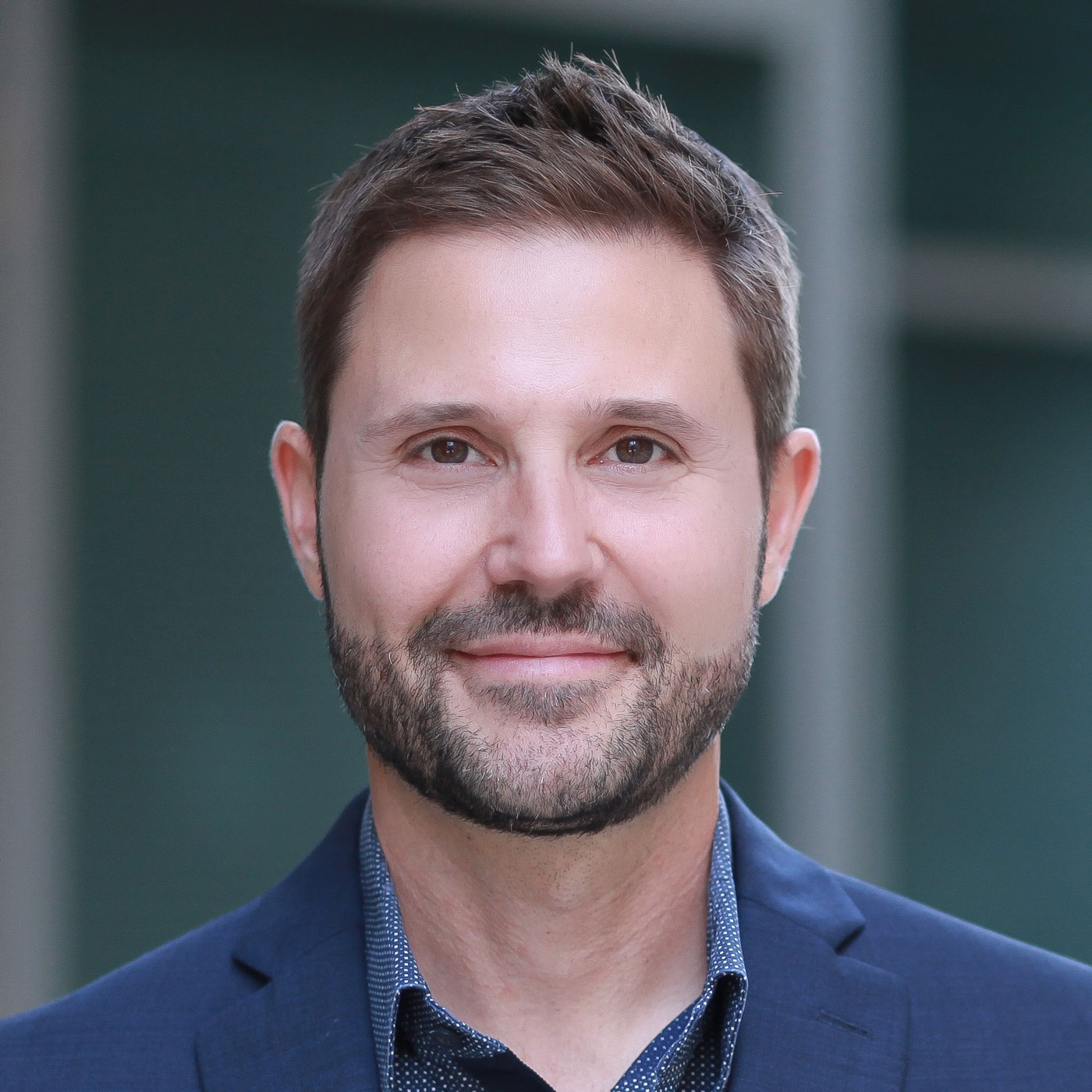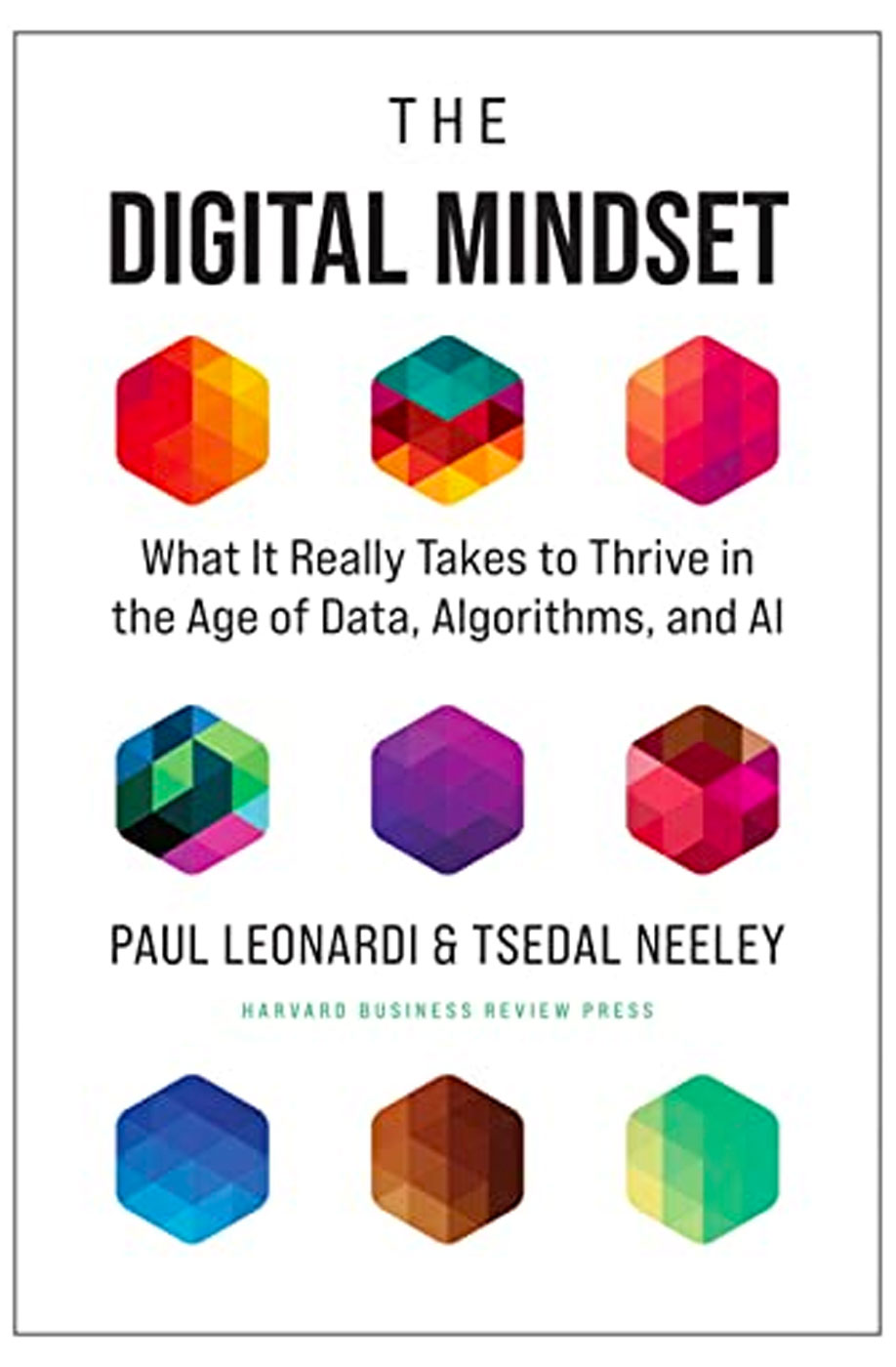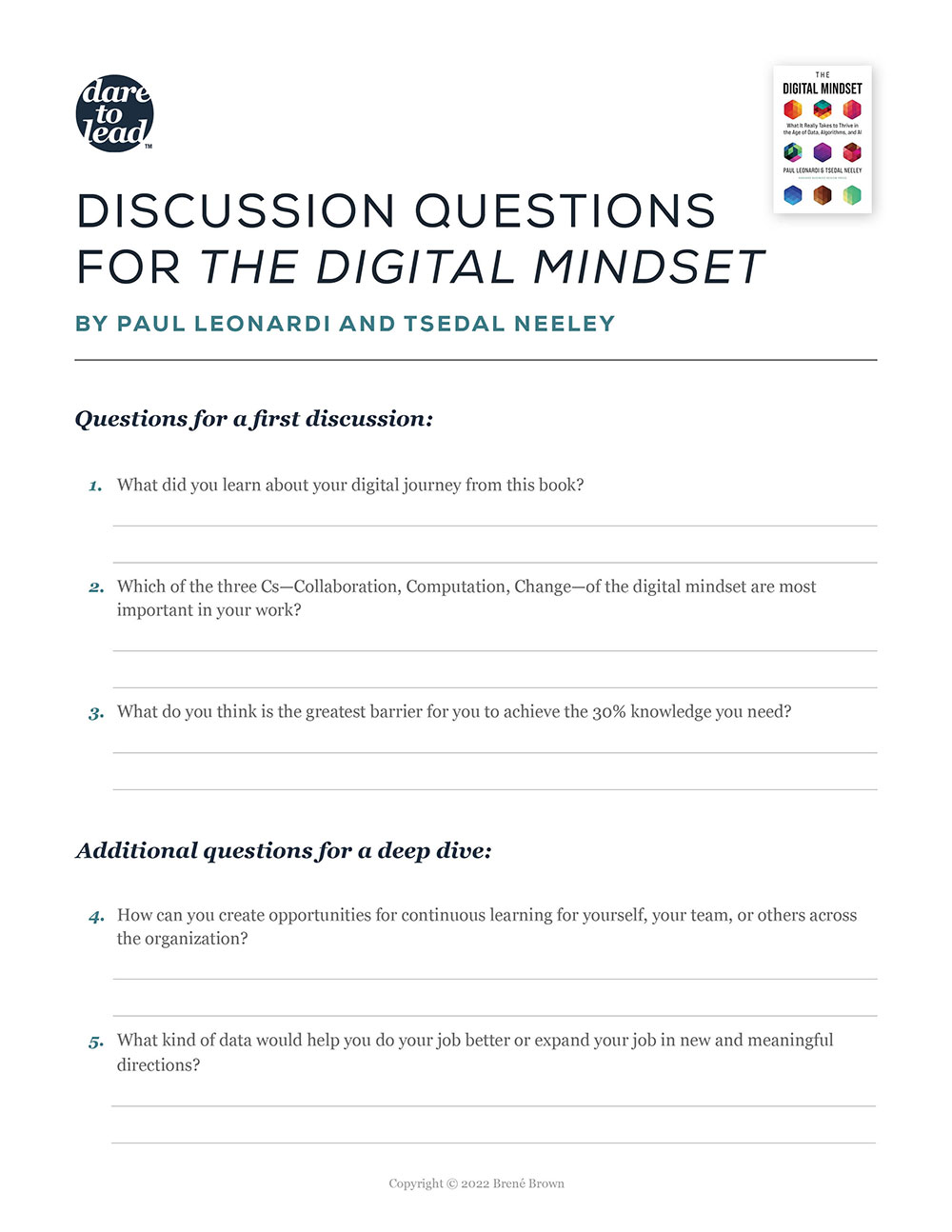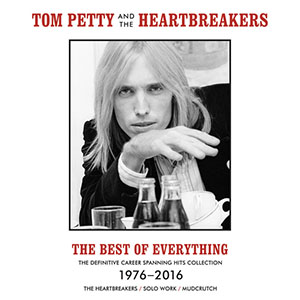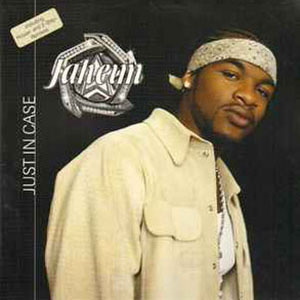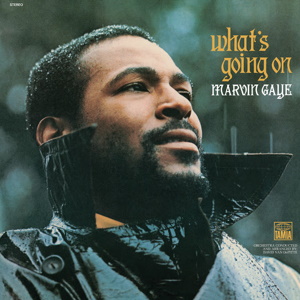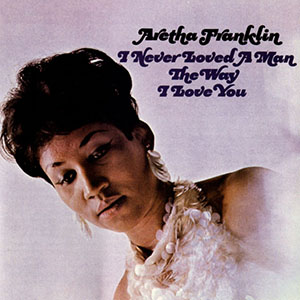Brené Brown: Hi, everyone. I’m Brené Brown and this is Dare to Lead. This is our last one, our last Dare to Lead podcast. I can’t believe it. It’s been such a great ride. Thank you for strapping yourself into the… What have we been riding? I guess like a roller coaster. Yeah. Strapped in, hands up, sometimes screaming, rushing downhill, sometimes plodding up very slowly, but together. And that’s been the best part. We’re going to jump into Part 2 with Paul Leonardi and Tsedal Neeley on digital transformation. It just keeps getting better. I’m on such a nerd out. It’s not even funny the second time. I’m glad you’re here. Before we get started, let me tell you a little bit about both of our guests. So Tsedal Neeley is the Naylor Fitzhugh Professor of Business Administration, Senior Associate Dean of Faculty Development and Research Strategy, and the Faculty Chair of the Christensen Center for Teaching and Learning at the Harvard Business School, recognized as one of the Forbes Future of Work 50 and one of the 100 People Transforming Business by Business Insider. She focuses on how leaders can scale their organizations by developing and implementing global and digital strategies.
BB: She regularly advises top leaders who are embarking on virtual work and large-scale change that involve global expansion, digital transformation, and becoming more agile. Prior to her academic career, Tsedal spent 10 years working for companies like Lucent Technologies and the Forum Corporation. And she worked in a lot of different areas, including strategies for global customer experience, which has really helped shape her work. She has such a huge reference set and brings together so much information. And they both received their PhDs together at Stanford, which is where they met and they’ve published a ton together, which is really, I love it. You can tell that they have a real connection and real shared respect and understanding. It’s just a shorthand that’s really cool to listen to on the podcast. So, Paul Leonardi is the Duca Family Professor of Technology Management at the University of California, Santa Barbara. He’s an expert on digital transformation and organizational change. He advises senior leaders on how to organize their workforces to compete with data, analytics, and new technologies and consults with companies like Google, Microsoft, General Motors, and Discover about using digital tools to enhance internal knowledge sharing, how to structure global product development operations, and how to manage the human aspects of new technology implementation.
BB: I know these sound like big, hard academic titles, and they are big academic fancy things. These are very accomplished folks. I know the topic seems, oh, digital transformation, AI, algorithms. Huh. This is a heart led, heart full conversation. And let’s get started. All right, y’all, we’re back with Tsedal and Paul for our Part 2 on digital transformation and their book, The Digital Mindset. Okay, I will say this. Sometimes we say if you haven’t listened to Part 1, you can listen to it before or after. No, this is sequential. You’ll have to listen to that first because it’s going to set a table and then it’s going to pull up a chair and then it’s going to invite you to the table whether you want to come or not. The two big things I learned from last time, this Venn diagram, again, it’ll be on the website page where the podcast is located on brenebrown.com. Digital transformation is at the center of a Venn diagram of data or access to data, computational power, and modeling or algorithms. And the other big learning from the first one was we have to level up. We have to get maybe not fluent, but at least conversational and understand and then also we’re going to do rapid fire in this one.
BB: And I have also solved another question, which is why Maná is on Paul’s list. We were talking about Spanish as an example, like speaking Spanish. He said he had a lot of friends who are Mexican immigrants and Mana is like one of my favorite bands and my husband who’s myrish half Mexican, half Irish. So I was like, “How did Paul know Maná”? But now we know.
Paul Leonardi: Now we know.
BB: We’ll get to it.
PL: Great.
BB: All right. I want to start this episode. You have a lot of examples through the book, good stories. And I love this about the book. I mean, I think one way I would level up an organization is I would do an organizational book read of The Digital Mindset. And I know people are like, “What?” But we do it all the time with Dare to Lead. And I think it’s so smart. You get everybody a copy of the book and then you arrange two or three one-hour lunches in small teams to discuss. And then I think you’ve got a big foundation for conversational digital transformation. Do y’all agree?
Tsedal Neeley: Completely.
PL: Yeah. I think you get a vocabulary and hopefully some of those stories that you mentioned, Brené, will help give people windows into the areas that they thought were really complex, but maybe aren’t so complex.
TN: It’ll also reveal why some things have been hard to do for many managers. Isn’t it just a matter of bringing in new technology? Isn’t that what digital is? No, it’s actually not. It’s not only the people side, but also our existing technology, how to transform them. So, it will reveal components. And this is what we’ve heard about the book. People who have read the book and have said, “Whoa, I knew this piece. I had no idea about this piece.” And this is why we’ve been struggling to make progress with our digital transformation. So, to get the lay of the land, to have definitions of things like machine learning, how do machines learn is something in the book.
TN: If you understand how machines learn, then you can understand how can we use this technology in order to bring value in our organizations. So, there’s so many buzzwords, as Paul mentioned, so many things. People talk about AI, machine learning, cybersecurity, privacy, data, data visualization, AB testing. What is all of that? And how does that affect me? And this book will make all the connections for people so that people can develop their learning agenda in order to level up and collaborate.
PL: I would say also that we’ve been kind of talking about from the perspective of people who aren’t well versed in a lot of digital and digital related topics. But as you might imagine, Tsedal and I end up interacting a lot with people who are extremely computationally sophisticated.
BB: For sure.
PL: And it’s interesting that they will often say if they hear that we’ve written this book, “Well, sure, sounds like a good book for somebody else and not for me.” But I think what they often get out of it too, is that this recognition that the technology is only one piece in the puzzle and understanding how we implement those technologies and how we use them to collaborate in more meaningful ways with other people and how we lead others in our organizations to take on more sophisticated leadership roles around this digital journey. Those are the kinds of things that they end up finding really valuable about the book because they also recognize that it’s not just about the technology.
BB: I’ll tell you why it stands out for me in a big way is, let’s say you have like a little dinghy on the ocean, and you have a big tanker. I would have put my digital transformation understanding at tanker size just because I go into a lot of organizations in the middle of it. And I’m not there to help with computational power or algorithms. I’m there to help with fear, uncertainty, all the people stuff. And like you said, Paul, the engineering team, which I end up working with a lot, the first hour we’re there, “We’re not afraid. The afraid group’s down the hall.” And by the time I’m done, they’re like, “Oh, no, no, helping people understand and spending time with people in fear. We don’t do that actually.”
PL: Totally, totally.
BB: I’m like tough shit. That’s the way this works. So, I would have put my understanding of digital transformation at tanker size, not dinghy size. What this book does is shows you a photo of the ocean from the sky. I did not understand very much at all about the ocean. I didn’t know what soup I was in. And I love the book because you also say, let’s zoom out.
BB: Like a lot of books do. I think as academics, we’re taught to write, let’s zoom out and get really narrow like the upside down triangle. But this is different because it zooms out. It shows us the ocean, it zooms in, it teaches us something and then zooms back out and shows us how what we’ve learned is put into context. Then it zooms back in and teaches us something else and then it comes back out. And so, I do think if you’re thinking, “I’m in digital transformation, people are resistant. We’re having a hard time. This is the book.” Don’t overnight put a coding book on everyone’s desk in HR unless you want to waste “19.99. It’ll be a good paperweight. But this is different. I want to ask this question. What is the 30% rule, and how does it apply to developing the digital mindset? Tsedal?
TN: The 30% rule actually is the common language or the baseline digital fluency or literacy that everyone needs to achieve. And it comes from, it’s actually borrowed from language acquisition concepts. For many years, I’ve looked at how organizations use English as a common language for international business. It is the common language of the world.
TN: And so, we thought about how do we figure out what the common language is for digital that everyone needs to achieve. So, in the English language, native speakers have about 12,000 words, English words to become native speakers or mastery level. That’s kind of how it works out, 12,000 words. But for non-native speakers of the English language to have efficient, effective levels of fluency, they only need about 4,000 English words. And this is what we’ve discovered in the linguistics and globalization space. So if you think about it, that’s about 30% of native speakers capability. So, in this 30% rule, what we’ve tried to do… and the whole book is about the 30%. If you understand the whole book, you’ve achieved your 30%. It’s what you need to know, baseline knowledge for you to have a digital mindset. That’s what the 30% rule is.
BB: God, that’s so cool. You know what I love? I think y’all secretly grounded theory people.
TN: We are.
PL: No, it’s not, no secret.
TN: Not secretly. It’s an openly known, but like I said, we were trained in a program at Stanford’s engineering school with people who looked at the intersection of work technology in organizations. But our way of knowing is going in the field.
TN: You go in the field, you crawl inside of organizations, you spend thousands of hours observing, interviewing, spending time with people. And then in these natural settings from there, you’re abstracting, aggregating, and of course, conceptualizing as you do, Brené. And so, we very much trained to learn from the grounds, but we also have applied many quantitative methods as well in order to ask different questions. It’s not just the how questions, but also hypothesizing. So it’s back to this bilingualism.
BB: It is. I love what Paul said, “No, it’s no secret.” We’re out and proud grounded theorists here. And the other reason why I noticed it in the book for sure is one of the things I thought was so weird about what I was studying for my dissertation put me in social work literature when I had to do that lit review for the dissertation proposal. And where I really found in the end from the ground up where I really needed to read and understand the most, I guess, deeply was liberation theology. Because when I went into study how we build relevance and connection as helping professionals, what really came up was this idea of acompañar, the Spanish verb to walk with.
BB: And acompañar, that whole thing comes out of the human rights movement in Central America and the verb to walk with. And so I noticed when you talk about linguistics, y’all draw on literature way outside your fields. Is that true?
PL: Yeah, that’s very true.
TN: Yes. If you think about liberation theology, if you think about the Tower of Babel, the Bible, and this idea that everyone speaks a different tongue and how do you get clarity? How do you get people to understand one another? It’s that image that I’ve thought about for many years to say, “Well, how do you get…” I don’t think I’ve ever talked about this publicly, but Pentecost where there’s clarity and people understand one another and it’s through common language. And so I’ve actually spent a lot of time trying to understand linguistics and sociolinguistics as a way to figure out how can you get people on the same page, whether it’s DEI, whether it’s literally cross-cultural, whether it’s cross-lingual, how do you get people on the same page? And our conclusion in this digital realm is this digital mindset is about tool sets, skill sets, and mindset shift that everyone has to have a little bit of in order to get on the same page. But it was language and humanity that got me there actually. So yes, very much so.
BB: I’m understanding the resonance now of this book so much for me, because my work is mindset and skill set. I’m not interested in one without the other and language.
PL: Yeah. And I think if you put together skill set and mindset, that 30% rule is really about the skill set. It’s the skills that you need, but the book is not called The Digital Skill Set.
BB: No.
PL: The book is called The Digital Mindset for a reason. And that is when you have the knowledge that the skills give you, you can start to think in new ways and you can start to ask questions in new areas. And you have to do some homework in order to be able to ask the right questions in class. And it’s the same thing when we’re thinking about digital change is that if you don’t know how these things operate in the area of collaboration, computation, and change, which are the three major approaches that we summarize in the book, you’re not going to be able to think in the ways that are going to help you to be really successful. So, there is a really intimate relationship between that skill set and the mindset. And it’s so funny that, and Tsedal I know you’ve had this experience too. Many times we get this questions from senior leaders like, “What are the skills my employees need?”
PL: And I always want to say, “Well, just stop.” If you’re just going to train them in a bunch of skills, that’s not going to be enough. What you really should be asking is, “What are the things my employees need to be thinking about? How should they be thinking about things?” And then we can back up from there to say, “Well, what are the skills they need to learn to enable their thinking?”
BB: Can I just say, “Amen. Preach. Yes.” And it is, again, I think a leader that asks that, which I hear it all the time, especially because they look at what I do as much more SOFT skills. I don’t want to say it out loud.
PL: Yeah. They’re probably like, “Give us the five things that we could do to make our employees more….” Yeah. Right.
BB: Yeah. And I said, first of all, you need to model leadership of thinking and doing and feeling in an integrated way. All right, Paul, I have a question for you. This is around computation.
PL: Sure.
BB: Okay. Again, this is like, this is my whole life’s work. Y’all talk about how the more specifically and granularly you look at data, the bigger picture you’re able to see. You connect this work to pointillism.
PL: Yeah, that’s a fun little metaphor there.
BB: Okay. Walk us through it.
PL: Sure.
BB: I’m into it. I’m geeking out hard. Let me just tell you. Okay.
PL: Sure. Okay. Well, so this idea kind of came when Tsedal and I did a couple of studies and we published them in a bunch of academic outlets that were looking at how companies could share knowledge more effectively. And what we were wondering was, and if you have big, but really this could work for small organizations too, but big organizations that are distributed across different locations, perhaps even different countries, boy, we would really love, if you recognize that the people that work for us are smart and they’re enthusiastic and they’re trying their best. There’s things we should be learning from each other to make all of our work better in this organization. How do you get that knowledge sharing to happen? And it’s really tough to do when people don’t see each other and run into each other in the hallway, and nobody wants to write down everything they did and put it in a database somewhere. That’s garbage. It’s not going to work. So, we had this idea that maybe some of these digital platforms for communication, but kind of look like Facebook or Instagram for the workplace, just kind of enterprise social networking tools.
PL: They could be really useful at helping people to learn by watching each other and engaging in more informal communication. And one of the things that we found was that, this actually was true, that when people began to communicate on these platforms and they would move their, the things they would talk about in email, which is, if you think about email, it just is between me and Tsedal, right?
BB: Right.
PL: It’s invisible to everybody else. But if I took that exact same communication, that exact same message, and I decided instead to communicate on this platform that made that message visible to everyone, now you have people all over the organization that can say, “Hey, I have an idea of what Tsedal knows. I have an idea about what Paul knows. I know that Paul and Tsedal know each other,” because they see that communication that was once invisible happening in front of them. So, this whole idea about pointillism was that when you see all these little bits and pieces happen today, tomorrow, next week, they don’t mean a whole lot to you until you start to step back from them.
PL: You, kind of, walk away. And then this interesting Matisse comes into focus for you where you see, “Oh, Tsedal talked about the importance of language. Tsedal talked about the importance of digital technology. Tsedal talked about the importance of trust and collaboration.”
PL: “Whoa, Tsedal is actually an expert in digital transformation.” So, you take all those pieces and you assemble them to show you this masterpiece that you wouldn’t have otherwise been able to see. And that takes a different set of skills than I think we’re typically used to because you have to sort of have some patience and you have to have some integrating capabilities.
BB: It’s so interesting to me because we’ve lived this in our organization. We’re only 30 people, but we have teams in Austin and New York, and we have people that don’t ever see each other. We live and die by the five C’s here, Context, Color, Connective tissue, Cost, and Consequence. We want everyone to understand these things, whether you own something or have authority, responsibility for it or not, we are about these five C’s. And so, one of the things that we decided a couple of years ago is when people were in problem-solving mode, we were big Slack users…
PL: Yep.
BB: To have those conversations in larger Slack channels. And it’s still a constant fight. It’s still a constant fight for people not to direct message each other.
PL: Oh, absolutely. That’s just so natural. That’s what they want to do, right?
BB: It’s so natural. And there are times and situations where you should use a direct message like “Thai for lunch?” No one gives a heck whether that’s happening or not. But because the thing that is frustrating for me as a leader is we have an ethos here where we have a high tolerance for risk and a high tolerance for failure, as long as we can reset, get the key learning, and embed the learning in the culture. What I don’t have a tolerance for is learnings and failures and hard things in one area of the organization happening in another area of the organization. Like why can’t we embed the learning across the culture, even if it’s not in our team where it happened? So, this pointillism thing is so powerful. Because for a minute, I’m like, “Oh, my God, why am I reading this Slack exchange about this?” And then that night in the shower, or when I’m running the next morning, I’m like, “Oh, my God, that is basically exactly what happened to us four months ago. I need to chime in and say, ‘Here’s what we learned.’”
BB: And I find it in my own work. People come to me often because I’m a big storyteller in my writing and say, “I don’t understand why this story resonated with me so much. I’ve never had this experience. I don’t have three siblings. I don’t… ” But it’s a piece of high knowledge in writing that the more specific something is, the more generalizable it is.
PL: Absolutely.
BB: It’s nuts.
PL: Yeah.
TN: It’s amazing. It’s deep. That’s really, really deep.
BB: Tsedal, thoughts? Pointillism, Tsedal, anything you want to add?
TN: I think Paul captured it just wonderfully. And I just think that that image and that understanding when we did the studies that he discussed, we actually saw differences in performance as a result of this meta knowledge, meta knowledge meaning who knows what, who knows whom, and this visible type of engagement, which involved some non-work disclosures as well.
PL: Yes, Tsedal, I was going to actually suggest that maybe you say a little bit about that because that’s a fun and interesting piece of this whole story that we haven’t told yet.
TN: We didn’t expect this. But one of the things that we found, and we looked at this across organizations, think the use of things like Slack, you mentioned Slack. And what we hadn’t anticipated, but the grounded work revealed for us was the importance of sharing a little bit of yourself, a little bit of self-disclosure and some non-work disclosure, like “I’m going to this thing,” or, “Oh, I love soccer, or whatever that may be in the engagement.” So, it’s not just this mechanical transactional, but very human. And what we learned is that when people disclose a little bit about themselves, non-work, others are actually observing and making determinations on whether or not this is a good person, this is a trustworthy person, this is someone I can connect with or not. And what we eventually labeled as passable trust in order to have future engagements with others. So, people are assessing you as a human being through your non-work elements that become quite public in these channels.
TN: And that ultimately led to many work-related sharing and collaboration that ultimately increased performance. So, the non-work, the human, this revelation ultimately increased organizational performance.
PL: Yeah. And I can give you just a little quick story to make that concrete from our data. There was this person in, I forget the country, but outside the U.S. who had engaged in some interaction with colleagues on this platform around putting some marketing collateral together for this new project and also had disclosed his love of FC Barcelona soccer team in Spain. And there was someone from the U.S. who didn’t feel really comfortable about reaching out to this person that they didn’t know at all to ask, “Could we share your marketing collateral? Can we get some of that so we can kind of copy it and tweak it for our own market?” And the fact that he knew that this person was really into FC Barcelona, he said, made it much easier for him to reach out because they had something in common. And so that broke the ice and it was a foothold for getting this work-related knowledge. And the great thing about this story is that by getting this documentation from folks in the other country, they saved about $7 million in hiring consultants that would have done this for them. So not only was there an awareness that knowledge happened in another part of the company that I could have access to, but now I had a way to get it.
PL: And I had a way to interact with someone and form a relationship that I might not have been able to do before.
BB: I mean, it’s so huge and such the center and heart of the work we do in organizations, just relational, not transactional. We even have a Slack channel called Share the Love that people put in, “Bought my first house.” “This is my new girl. I’m launching my new girlfriend on Instagram. I thought I’d start here, meet her” or “First ballet recital.” And we’re small, so it’s easy. And we do the work that we do. So we all know each other. We do a lot of vulnerability work here just because it’s such a part of trust and building brave spaces to do things. But I would say there’s pieces in your book that describe every success I’ve had in my career is based on those things. Like if I have to meet with a leader and I happen to be in their office and see an FC Barcelona scarf hanging on the wall or something, immediately, because I’m a huge Liverpool fan. I’m going to give a lot of shit about 19…
PL: You are going to jab them in the ribs.
BB: I’m going to go and be like, “Oh, we’re enjoying having your new striker on our team.” [laughter] But it just becomes human so fast. And for some reason, y’all, for some reason, when I go into companies, I mean, I can go into companies during layoffs, during crises, afterwards.
BB: It’s almost the hardest to get people to take the armor down and be less defended. I would say the single circumstance that’s the hardest is during layoffs, and we don’t really do that at work anymore. It’s just not the right time to do the work we do, because that’s actually when I think you should bring… And when we do that work, we mostly focus on grief work, professional grief work. But I would say the most armored I experience people is in digital transformation work. I know, Tsedal is giving me the what the heck look.
TN: It’s amazing. I’m amazed.
BB: I’m going to tell you why I think this is true. And then I’d love to get your thoughts. We found and we’re in year 16 of kind of studying organizations. And it was interesting because this work started, probably this specific question in our research started 11 years ago when we did some work at the Bill and Melinda Gates Foundation. We found that the single greatest shame trigger at work is the fear of irrelevance.
PL: Yeah, I see where you’re going with this.
BB: Yeah. And so the biggest fear, the biggest shame trigger at work is, “I am no longer relevant. My contributions are less valuable.” And I don’t ever see this spike. Like it spikes in the midst of digital transformation. And then there’s a pattern that we predictably see, where it’s really hard because we talk a lot in our work about armored versus daring leadership that it’s not fear that gets in the way of being courageous at work. It’s how we self-protect when we’re afraid. It’s not fear, it’s armor, because we’re all afraid all the time. But it’s the defense mechanisms we use to self-protect that really drive disconnection, distrust those things. So, there’s a thing we see in digital transformation often where the armor, the fear of irrelevance, and the armor becomes, “This is not the way we’ve done things around here. I don’t understand the business case for this bullshit. We’re very successful.” I’m seeing them emphatically shaking their head yes for those of y’all listening and very territorial, very possessive. Then the armor, the unwillingness to unclench, to uncross the arms actually becomes a self-fulfilling prophecy about irrelevance thoughts.
TN: Shame is such a powerful, powerful emotion. I am so struck by this notion that people are afraid of becoming irrelevant and that leads to feelings of shame. Then of course the responses that you just described.
BB: Just armor up.
TN: Completely and it’s unfortunate because I’ll go left to come back to right, I promise. It’s going to feel connected. So, March 2020 when COVID hit, it accelerated the virtualization of work. It also accelerated the digital transformation of work. So what we had to go through that period and many leaders, senior leaders and managers, people who demographically are also older have had to very quickly adopt digital tools, VPNs for cybersecurity purposes, for exchanging the files, using tools like video conferencing and other things which were very foreign to them. I remember someone saying to me, “I didn’t know how to spell Zoom, but then I was on it every day within eight days.” So when the need arose, everyone adapted very quickly. It was survival, right? But that experience actually accelerated the demands for digital. I mean, for, many organizations actually couldn’t survive without coming up with digital business models, whether it’s e-commerce and other things. And so the thing that’s unfortunate for me as I listened to this and even the armor that you describe, digital transformation is what we call an opportunity gap versus a performance gap.
TN: An opportunity gap is what we need to do to anticipate the future in order to participate in the future versus a performance gap as a motivation for change is, “We’re losing market share. These things are going wrong. We need to fix it and we’re motivated because we have to fix it.” Opportunity gap oftentimes requires that we are motivated to see around the corner or to see over the mountain as one CEO tells me and say, “What’s coming? Is there an oncoming train and how do we prepare for that?” So, the challenge that I think you describe, the fear and relevance piece, people are seeing it. It’s there and they’re very worried that they won’t have the capability to participate, the capability to learn. And organizations have to be context where learning happens, where experimentation happens, where mistakes are okay, where no matter how old you are, no matter what work you do, that learning has to be at the core of supporting everyone, a workforce. Because in the absence of this learning, no matter where you are in the organization, the opportunity gap that’s before us or this digital oncoming train is going to get us.
TN: So, I wish the fear was in something very different. The fear of not learning fast enough, moving fast enough, and pushing it away from the individual. I as a student and a teacher of leadership as well, always think about getting leaders to not think about themselves, but also others and the organization and the future of others. And that requires a different mindset, frankly. So, it breaks my heart that shame is at the heart of this. I’ve never thought of it this way, but boy, does it resonate.
PL: Yeah.
BB: It’s so hard too, because armor, I’m thinking about what you just said and what Paul said earlier, armor crushes humility, armor crushes curiosity. Paul, thoughts?
PL: Yeah, I really appreciate the language that you use to describe this. I hadn’t thought about it in terms of shame, but I see that. I don’t know, it’s making me think about lots of past experiences through a new set of lenses. And you’re right. It tends to mostly happen, I think, at lower levels in the organization, individual contributors who feel like, “Well, I guess I should know this and I don’t, and I feel even more lousy because of it.” So it really resonates. I think that as leaders in our companies, there are two places where we err often and we help people put the armor up, even though it’s not our intention. I think the first is in how we often roll out new initiatives and new technologies. I can just tell you, we could spend three more hours, me just telling you stories about implementation failures that had nothing to do with the technology. The technology worked beautifully in every instance. But the reason that these digital tools didn’t end up bringing about the change we wanted was because the people who were going to use them clammed up and didn’t use them or didn’t use them in the ways that we expected.
PL: And oftentimes it’s because inadvertently senior leadership told them not to. They thought they were saying, “Go ahead and use these tools.” But what they were really telling them was maybe you shouldn’t actually be using these tools. And what I mean by that is, if we don’t tell people and give people a rationale for how this is going to help them in their work, and we don’t help them to see that we don’t expect you on Day 1 to know how to use any of these things perfectly. It’s a learning process. Then what we’re essentially telling them is if you don’t see major improvements in the first three days, you’re doing something wrong and you’re to blame. And nobody’s going to see major improvements in the first three days.
BB: No.
PL: So that’s one area is that we don’t frame and talk about this implementation process in the right way. The second is I think a failure of imagination for many mid-level to senior managers, which is that a big part of a goal for many companies of implementing digital tools, especially those that automate work is that we want to stop people from having to spend all this time if you’re in PR on LexisNexis trying to find company mentions and all this stuff, right?
PL: We want to automate that. But if you’re going to automate that stuff with digital tools, which is great, that means we should be figuring out what are the ways that we use our employees’ brainpower to do something better and more interesting and more helpful for the company. And that’s where I often see a failure in leadership is that we’re not creative enough to help people figure out how do we expand our roles? How do we move into new areas? How do maybe I do that so that the person below me can now do my job and I can do something else? If we had more creativity in those areas, I think we could help people not suit up in that armor so quickly.
BB: This is so beautiful. I’m loving that we’re ending on this conversation because one of the things that we talk about in our work is, we’re trying to create cultures where armor is neither required nor rewarded. Because sometimes armor’s perfectionism, those things are really excluding, those things are rewarded in subtle and not so subtle ways sometimes. I also think we lost 75% of our revenue in four days when COVID hit. And I had been really lucky because I had been working with a company here, an amazing grocer that will remain unnamed, that has the most sophisticated environmental scanning groups that I’ve ever been around. And I’ve done work with special forces, but these folks are like, and they started getting concerns in November of 2019 because they take distribution of food and supply chain things as an ethical issue. And so we kind of had a backup plan with the podcast. And instead of launching the podcast at South by Southwest, I did it in my kid’s closet, figuring out the technology. And I remember telling my team, Slacking my team and saying, “Listen, we’re moving everything to Zoom. I really suck at this. These are three tutorials that I have found that I think are helpful.”
BB: “We’ll just get through it together and leave no person behind.” But that’s not how I see leaders rolling out. What I usually see in a digital transformation, especially if the leader themselves, I don’t know how to figure out the right pronoun there, but the leader is also fearful and guarded, which they often are because it’s a big spend. And it’s not just a change, a surface change. It’s a strategy and everything change.
PL: Yeah, structural change too.
BB: Yeah, structural change. Thank you. They’ll say, “Here’s what we’re doing. You’re either with us or you’re not. You’re either get on board or you’re not going to get on board.” And then that just as opposed to, “Here’s what we’re doing. It’s going to be new for all of us. I understand 40% of it. We’ll learn together. Huge opportunities for our company. It’s different. I think the performative versus opportunity thing is huge.”
BB: All right. I’m aware of time. You guys are badasses. I have one final question before we get to the… and this is probably the most serious question of the day. One last question before we get to the rapid fire. I read an article in The Economist that they are now treating the word data as singular and will not be saying data are, but data is. Thoughts.
PL: Oh man, we fought with our editor about this one.
BB: What did you find?
TN: PTSD. Go ahead, Paul.
PL: I know, right? Well, we like plural.
BB: Because it is plural.
PL: Because it is plural. Exactly.
BB: It is plural.
TN: Latin term datum.
PL: Right.
TN: Yeah.
PL: The singular. So boy, we went like nine rounds with this. We finally won in the book, but I don’t know. Maybe The Economist is going to make us look foolish for fighting that fight.
BB: No way. You know what? I’m in my fifties. I’m armoring up. I have no fear of irrelevance. It just happens to be plural. Okay. I love that y’all are on my side. I would have thought really. Yeah. It’s just so weird to say the data is.
PL: Right.
BB: That’d be saying like, I don’t know. The people is.
TN: Exactly. Exactly.
BB: Can’t do it. Yeah. We’re a party of three. FYI. Everybody else say, “Oh, the researchers on my team think it’s plural too,” but everybody else is like, “Yeah, is sounds better.”
PL: All right. Well, we’ll fight the good fight.
BB: Yeah. All right. Y’all ready for rapid fire?
TN: Maybe.
PL: Yep.
BB: You’re for sure, ready. I’m going to change who answers first so you can, you know, okay. Tsedal, fill in the blank for me. Vulnerability is…
TN: Disclosing personal information in order to connect with others.
BB: All right, Paul. Vulnerability is…
PL: Difficult.
BB: Yeah. Both things can be true. Paul, what’s one piece of leadership advice that you’ve received that’s so good you have to share it or so shitty you need to warn us?
PL: I’ll do so good, which is really understand what your employees are trying to accomplish. And I mean that in the sense of what they’re trying to do in the workplace to get their tasks done, what they’re trying to do in terms of their career, what they’re trying to do to build their own learning and knowledge. And if you can really understand what they’re trying to accomplish, you can be the one that helps lead them along that path.
BB: Oh, God, I love that. Reminds me of Richard Branson. Give them all the training and learning that they need, a great culture so that they can leave and do whatever they want and then provide a workplace where they don’t want to leave. You know, yeah. Tsedal, piece of leadership advice that’s so good you got to share or so shitty you should warn us.
TN: So good. I think.
BB: Okay.
TN: Leadership is about poetry and plumbing. And so, as leaders, we need to understand the mechanics or the plumbing. But we have to understand the importance of poetry in order to engage people’s hearts and minds. And leadership is a huge responsibility. It’s a science. It’s a skill. It’s nurtured. It requires an explicit approach. And it’s learned.
BB: Okay. Tsedal you’ll go first on this one. Last TV show you binged and loved? Oh, it’s going to be trash TV. I can feel it coming. I hope it’s really bad.
TN: I’m actually obsessed with the Food Network because if I wasn’t an academic, I’d be a judge on the Food Network. I’ve been trying to get on for a very long time just to judge and taste stuff and say amazing things. So, Chopped.
BB: So good. Paul?
PL: Oh, Tsedal is way too highbrow for me.
BB: Yeah, go trash. Go trash TV.
PL: I’m going with Derry Girls.
TN: What’s that?
BB: I love that show.
PL: What? Oh my gosh.
TN: You have daughters.
PL: Only the best show.
TN: I have sons. I don’t know. What is that?
PL: No, this is not a show for kids.
TN: Did you say Derry Girls?
PL: Derry Girls. Oh, it’s about this group of teenage girls growing up in Derry, Northern Ireland during the troubles in the early 90s. It’s just hilarious. It’s like the funniest TV I’ve ever watched.
BB: Oh, God. It’s so funny. As someone who went to Catholic school, it’s got the best representation of nuns.
PL: Oh my gosh. She’s so dry. I love her. She’s the best character on the show.
BB: Best character. Okay. This is a harder question. Paul first. What is a leadership lesson that you have to keep learning and relearning and relearning that the universe will just not let you off the hook? It just keeps putting it in front of you?
PL: That my ideas aren’t the best ideas.
BB: That’s so rude and true for me too. Damn, that’s a hard one.
PL: It’s a tough one.
BB: That’s so honest. This is from the same guy who said vulnerability is hard. Okay. It’s so true.
PL: It is.
BB: Tsedal, lesson that you have to keep learning and the universe is just like, “No, not yet.”
TN: Boy, there’s so many. I just think that. The one that I’ll choose here is the importance that there are pluralistic, that we lead in a pluralistic world where our perspective, our vantage point could actually be extremely limited and very different than those who we’re interacting with. So, learning what the vantage points and the perspectives are of others is important, not only to be able to serve, but also to influence and bring people along. So, to me, the thing that continues to be very real is that what I believe is an objective truth or fact actually could be very subjective. And I need to constantly ensure that I’m getting the right input in order to make the best decisions.
PL: Well said.
BB: Thank you both for the really tough ones. Those are hard. Okay. Paul, one thing you’re deeply grateful for right now.
PL: I’m deeply grateful for my family. I have a wonderful family that’s very supportive. Today’s my youngest daughter’s birthday. So that’s top of mind how grateful I am for them.
BB: Lovely. Beautiful. Tsedal, one thing you’re deeply grateful for right now?
TN: I am deeply grateful to my parents. My family, amazing, my amazing husband and sons, but my parents who are going through life things, because as we do, I’ve been thinking about them very, very much and just very grateful to have been born to them, raised by them, and continue to have them inside of me every day.
BB: All right. You both gave us five songs that you wouldn’t want to live without. We’ll start with you, Paul. “Say It Ain’t So,” by Weezer, “Let It Be,” by The Beatles, “What Can I Say,” by Brandi Carlile, “Walls,” by Tom Petty and the Heartbreakers, and “No Ha Parado de Llover,” by Maná. Now, I always give this disclaimer for academics. In one sentence, without any semicolons, and dashes, or long sentences, in one declarative short sentence, what does this playlist say about you?
PL: It says that I like a good melody that you can sing along with about meaningful topics.
BB: Yeah.
PL: Which is probably a metaphor for other things, if I thought about it more deeply.
BB: I would venture to say yes. Okay, Tsedal.
TN: Yes.
BB: Are you ready? “Wine Light,” by Grover Washington, “Just in Case,” by Jaheim.
TN: That’s right.
BB: Is that right? “What’s Going On,” by Marvin Gaye, “Respect,” by Aretha Franklin. And you may need to help me with this title by the Yoshida Brothers. What’s the title?
TN: “Fukaki Umi no Kanata,” Japanese Jazz.
BB: So in one sentence, what does this playlist say about you?
TN: That I’ve had a very diverse life with a lot of exposure to a lot of things. And so this list shows demographic diversity. It shows generational diversity. And I love music very, very much. So that’s it. TV shows, much less though. Derry Girls, my goodness. I have to go check it out. I’m so curious.
PL: Look it up. It’s good.
TN: I am going to check it out.
BB: It’s so funny and it’s so embarrassing in places.
TN: Oh, I’ll love it.
BB: It’s so cringey. I have to look away sometimes, but it’s so good. I am so grateful to both of y’all for being on Dare to Lead. I learned so much. The book is The Digital Mindset. You’ll get all the links to it on our page. Again, I’m going to say this and I don’t say this, maybe, I don’t know.
BB: I’ve said this maybe about one or two books. This is such an important investment for your organization to put together a organizational wide read of this book. And then to have people do a couple of, like we do this around lunch and learns where people just come and talk about the book for an hour for a couple of times over a month. Because reading it by yourself is good. But talking about it with others is where the magic happens. It’s where the learning happens. I think you’ll get your 30%. And that’s huge. So, thank you for your work. Thank you for going against every single thing I learned in academics, which was the more accessible things are, the less smart you are. I think the more accessible you make things, the deeper the brilliance in understanding them. So, I think y’all really understand these things and gave us language for a complex topic. So, I’m grateful. Thank you to both.
TN: Thank you so much, Brené. What a treat. Thank you.
PL: Thanks for having us. Yeah, this has been wonderful.
BB: Thank you. All right, y’all again, episode pages on brenebrown.com with all the links to books, to articles, to there’s a great HBR article, a download of the Venn diagram that we talked about. Final sign off. What can I tell you? The thing that gets in the way of daring leadership is not fear, it’s armor. Open your hearts, open your minds, take care of each other. And I know we’ll see each other again somewhere soon. I’m sure. Stay awkward, brave, and kind. The Dare to Lead podcast is a Spotify original from Parcast. It’s hosted by me, Brené Brown, produced by Max Cutler, Kristin Acevedo, Carleigh Madden, and Tristan McNeil. And by Weird Lucy Productions. Sound design by Tristan McNeil and Andy Waits and the music is by The Suffers.
© 2022 Brené Brown Education and Research Group, LLC. All rights reserved.




